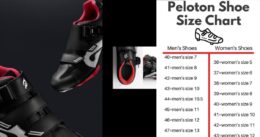The Peloton Shoe Size Chart is your go-to resource for finding the perfect fit for Peloton cycling shoes. Designed with user-friendliness in mind, this interactive chart helps you navigate the diverse world of shoe sizes and choose the one that suits your preferences and needs.
Peloton Shoe Size Chart
Women’s Shoe Sizes:
| Peloton Shoe Size | Women’s Shoe Size (US) | Euro Shoe Size | UK Shoe Size |
|---|---|---|---|
| 36 | 5 | 36 | 3.5 |
| 37 | 6 | 37 | 4.5 |
| 38 | 7 | 38 | 5.5 |
| 39 | 8 | 39 | 6.5 |
| 40 | 9 | 40 | 7.5 |
| 41 | 10 | 41 | 8.5 |
| 42 | 11 | 42 | 9.5 |
| 43 | 12 | 43 | 10.5 |
These tables provide the Peloton shoe sizes along with their corresponding sizes in the United States (US), Euro, and UK sizing systems for women’s shoes. For example, if you wear a size 7 in the US, your corresponding Peloton shoe size would be 38.
Men’s Shoe Sizes:
| Peloton Shoe Size | Men’s Shoe Size (US) | Euro Shoe Size | UK Shoe Size |
|---|---|---|---|
| 36 | 3.5 | 36 | 3.5 |
| 37 | 4.5 | 37 | 4.5 |
| 38 | 5.5 | 38 | 5.5 |
| 39 | 6.5 | 39 | 6.5 |
| 40 | 7.5 | 40 | 7.5 |
| 41 | 8.5 | 41 | 8.5 |
| 42 | 9.5 | 42 | 9.5 |
| 43 | 10.5 | 43 | 10.5 |
| 44 | 11.5 | 44 | 11.5 |
| 45 | 12.5 | 45 | 12.5 |
| 46 | 13.5 | 46 | 13.5 |
| 47 | 14.5 | 47 | 14.5 |
| 48 | 15.5 | 48 | 15.5 |
Similarly, these tables offer the Peloton shoe sizes alongside their equivalents in the US, Euro, and UK sizing systems for men’s shoes. For instance, if you typically wear a US size 9, your corresponding Peloton shoe size would be 40.
Understanding the Peloton Shoe Size Chart
The Peloton Shoe Size Chart is a fundamental tool in helping users determine their ideal shoe size for a comfortable and high-performance riding experience. Its layout and structure have been thoughtfully designed to provide ease of use and clarity. When you first access the size chart, you’ll notice a well-organized table neatly presented within the web page’s designated area. This structured layout ensures that users can quickly locate the information they need without any confusion.
The chart is divided into two main sections: the header (or the table’s title) and the body (the table’s data). The header prominently displays “Peloton Shoe Size,” which serves as a unique identifier specific to Peloton products. It’s a crucial point of reference for finding the correct size. The body of the table, located below the header, is where the detailed sizing information is presented. This clean and organized structure allows users to easily navigate the chart, find their relevant shoe size data, and make informed decisions about their shoe size.
Table Columns and Their Significance
The table within the Peloton Shoe Size Chart features five distinct columns, each playing a specific and significant role in helping users determine the correct shoe size. The first two columns, “Women’s Shoe Size (U.S.)” and “Men’s Shoe Size (U.S.),” cater to users in the United States and provide a gender-specific reference point for sizing. These columns are handy for those who prefer sizing their shoes based on standard U.S. measurements.
The “Euro Shoe Size” column corresponds to the European sizing system, which is recognized worldwide. This is particularly valuable for users who are accustomed to European sizes or need to convert their sizing from other systems. The final column, “U.K. Shoe Size,” is relevant for users who are familiar with the United Kingdom’s shoe size standards. These distinct columns accommodate a broad range of users, ensuring that everyone can easily find their preferred sizing reference.
Source of the Size Data
The integrity of the Peloton Shoe Size Chart is underpinned by the source of its size data, which is directly provided by the Peloton brand. This means that the information within the chart is both accurate and reliable, as it originates from the manufacturer of Peloton shoes. Users can have complete confidence that the sizing details presented in the graph are up-to-date and explicitly tailored to Peloton’s products. This reliable source adds a layer of trust and certainty, making the chart a valuable tool for anyone looking to purchase Peloton shoes and achieve the perfect fit. Understanding the layout, columns, and data source of the Peloton Shoe Size Chart is essential for making informed decisions and ensuring comfort during rides.
Measuring Your Feet
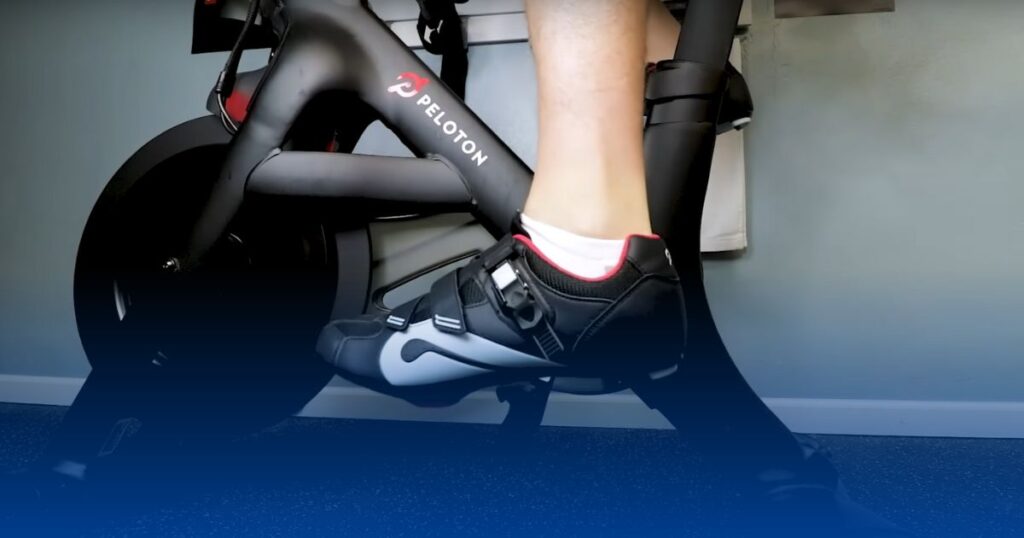
Step-by-step Guide to Measuring Your Foot
Accurate measurements are the foundation of finding the perfect shoe size. To measure your foot effectively, follow these step-by-step instructions. Begin by placing a piece of blank paper on a flat and hard surface, such as a floor. Then, ensure you have a ruler or measuring tape and a pen or pencil at your disposal. Here’s how to measure:
- Prepare Your Tools: Have your ruler or measuring tape ready. If you’re using a measuring tape, ensure it’s straight and uncoiled.
- Find a Flat Surface: Locate a hard and flat surface to stand on, such as a hard floor. This ensures that your foot doesn’t sink into carpeting or uneven terrain, which can affect measurements.
- Position Your Foot: Place your foot on the paper, ensuring it’s flat and evenly distributed. Your toes should point forward.
- Measure the Length: With your foot securely on the form, use the ruler or measuring tape to measure from the tip of your longest toe (often the big toe) to the back of your heel. Make sure the measuring tool is aligned straight, and note the measurement in inches or centimeters.
- Repeat for Both Feet: It’s common for one foot to be slightly larger than the other, so it’s essential to measure both feet separately. Record the measurements for each foot.
- Choose the Larger Measurement: In the event of a size discrepancy between your feet, always select the larger measurement to ensure a comfortable fit.
Tools Needed for Accurate Measurements
Having the right tools at your disposal is critical for achieving precise foot measurements. Here’s what you’ll need:
- Blank Paper: Use a blank piece of paper as the surface for your foot measurements. It provides a clean and level base for accurate results.
- Ruler or Measuring Tape: A ruler or measuring tape is essential for measuring the length of your foot. Ensure it’s straight, uncoiled, and easy to read.
- Pen or Pencil: Have a pen or pencil ready to mark the points of measurement on the paper.
Ensuring that your tools are in good condition and that you follow the measurement process accurately will lead to the most reliable results.
Common Mistakes to Avoid
While measuring your feet, it’s crucial to avoid common mistakes that can lead to inaccurate sizing. Some common pitfalls to steer clear of include:
- Using Inadequate Tools: Using a bent or stretched measuring tape or a ruler with clear markings can lead to accurate measurements. Ensure your tools are in good condition.
- Not Using a Flat Surface: Avoid measuring your feet on uneven or soft surfaces, as this can distort the measurements. Always use a flat, hard surface.
- Incorrect Foot Position: Ensure your foot is flat on the paper with your toes pointing forward. Standing or shifting weight can lead to inaccurate measurements.
- Not Measuring Both Feet: It’s essential to measure both feet separately, as they may vary slightly in size.
By following the step-by-step guide, using the right tools, and avoiding these common mistakes, you’ll obtain accurate measurements, ensuring that you can confidently select the correct shoe size for maximum comfort and performance.
Peloton Bike Shoe Size
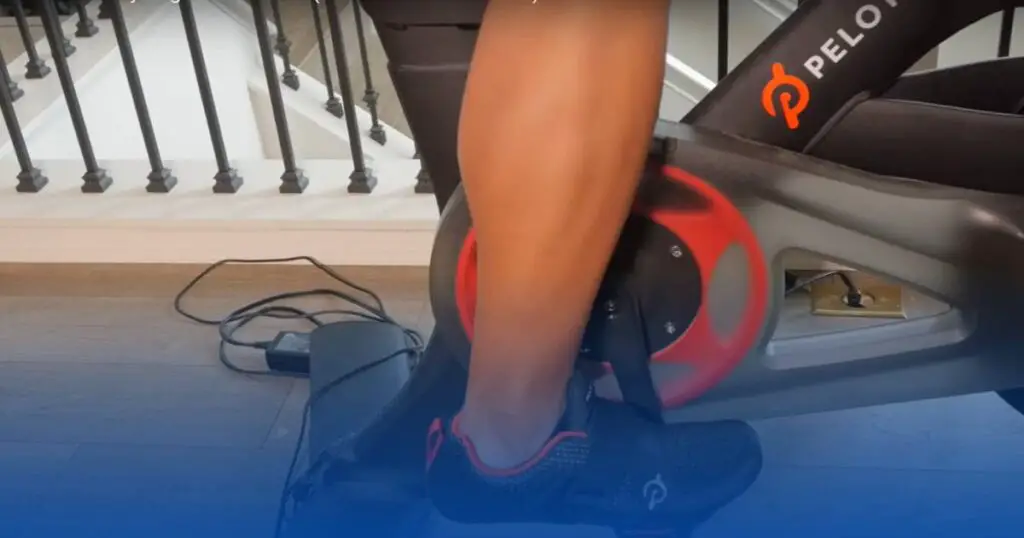
Details of the Peloton Bike Shoe Size Chart
The Peloton Bike Shoe Size Chart is a comprehensive resource explicitly designed to aid users in finding their perfect fit for Peloton cycling shoes. It encompasses a range of size information, catering to various regions and preferences. The chart typically includes vital details such as Peloton’s unique shoe size designations, U.S. Women’s and Men’s shoe sizes, Euro shoe sizes, and U.K. shoe sizes. These specifications are presented in a structured table format, making it easy for users to identify the sizing standards most relevant to them.
This size chart acts as a bridge between different international sizing systems, providing a comprehensive reference for individuals across the globe. By displaying the data in a clear and organized manner, it empowers users to make informed decisions regarding their Peloton shoe size, ensuring a comfortable and tailored fit. The availability of multiple sizing standards reflects Peloton’s commitment to accommodating diverse customer needs and preferences.
How to Find the Right Size for Peloton Cycling Shoes
Navigating the Peloton Bike Shoe Size Chart to find the perfect fit involves understanding the specifics of your own foot measurements. As a first step, it’s crucial to measure your feet accurately using the guidelines provided in the size chart or our previous section. Once you have your foot measurements, compare them to the Peloton size chart. Look for the column that corresponds to your preferred sizing system, whether it’s U.S. Women’s, U.S. Men’s, Euro, or U.K. sizes.
In most cases, your foot length in inches or centimeters will align with a specific Peloton shoe size in the chart. It’s worth noting that Peloton often recommends sizing up if you fall between two sizes, as a slightly snug fit can be adjusted with Peloton’s shoe customization options. Additionally, considering your specific needs, such as foot width and arch support, can further help you find the ideal shoe size within the Peloton sizing system.
Tips for a Snug Fit During Cycling
Obtaining the right Peloton shoe size is essential for more than just comfort—it significantly impacts your cycling experience. For an optimal and snug fit during cycling, it’s advisable to choose a size that allows a secure connection between your feet and the bike’s pedals. This ensures efficient power transfer and minimizes the risk of discomfort or injury during your rides.
While the Peloton size chart serves as a fundamental reference, it’s also beneficial to try on the shoes if possible, particularly if you’re new to Peloton products. Wearing cycling-specific socks during fittings can replicate the conditions you’ll experience while riding and help you determine whether your chosen shoe size offers the desired snugness.
Keep in mind that, with cycling shoes, a snug fit is often favored, as it minimizes foot movement within the shoe during pedaling. However, the fit should be tight enough and comfortable, as this can lead to issues such as numbness and discomfort during extended rides. To ensure your cycling shoes fit snugly and comfortably, remember that personal preferences and anatomical variations play a crucial role. Experiment with your Peloton cycling shoes to find the ideal balance between a secure fit and comfort, resulting in a more enjoyable and practical cycling experience.
Do Peloton Bike Shoes Fit True To Size?
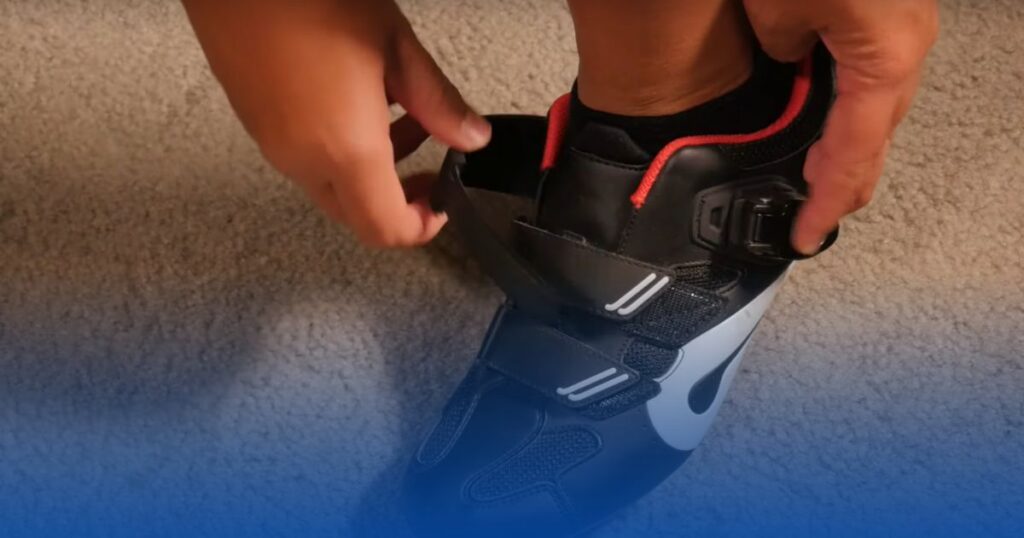
Exploring Peloton Shoe Sizing:
When determining if Peloton shoes fit true to size, it’s crucial to understand various factors that come into play. Peloton offers its sizing chart, a helpful reference tool. Yet, “true to size” can be subjective, influenced by individual foot anatomy and personal preferences for fit.
Factors like arch height and foot width affect sizing perception. Moreover, having one foot slightly larger is common. In such cases, using measurements from the larger foot is wise.
Prioritizing a Snug Fit:
For cycling, a snug shoe fit is favored. It minimizes foot movement within the shoe, enhancing power transfer to the pedals. However, it’s essential to strike a balance. A snug fit shouldn’t lead to discomfort or circulation issues.
Cycling-specific socks are beneficial. They help assess how your chosen size feels during a fitting. Peloton’s sizing recommendations are crucial to finding the right balance between snugness for performance and comfort for longer rides.
Should You Size Up Or Down With Peloton Shoes
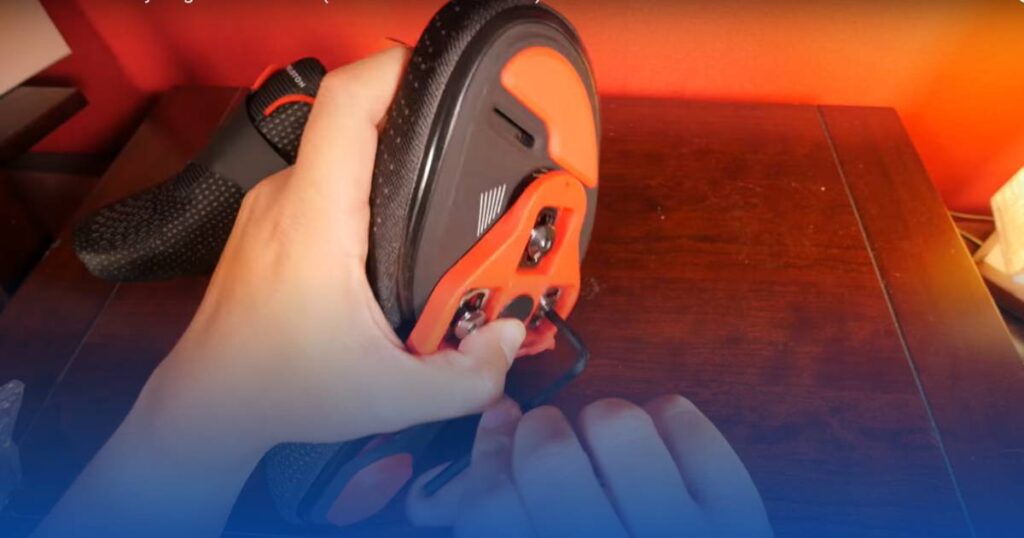
Choosing the Right Size for Peloton Shoes
Selecting the correct size for Peloton shoes is a crucial decision. It often revolves around whether to opt for a larger or smaller size. Many users wonder if sizing up or down is the best approach. The answer depends on several factors, including personal preferences and how you plan to use the shoes. Peloton’s sizing recommendations provide valuable guidance.
When considering whether to size up or down, it’s essential to think about how you prioritize your fit. If you prefer a slightly snug fit, which is common in cycling shoes, choosing your exact size or sizing down slightly might be suitable. This can enhance power transfer and minimize foot movement while pedaling, especially during high-intensity rides.
However, if you prioritize comfort and plan for longer rides, sizing up could be a viable option. A larger size allows for more room within the shoe, accommodating a more comprehensive range of foot shapes and sizes. It can reduce the risk of pressure points and discomfort during extended rides. Additionally, consider the type of socks you intend to wear while cycling; thicker socks may necessitate a slightly larger size.
Accommodating Foot Width and Personal Preferences
Foot width and personal preferences play a significant role in the sizing decision. If you have wider feet, sizing up can provide the extra width needed for a comfortable fit. It’s important to remember that Peloton’s sizing chart is typically based on standard width (D) for both women’s and men’s sizes. If you have wider or narrower feet, adjusting the size accordingly can help you achieve a more comfortable fit.
Moreover, individual preferences are a vital consideration. If you’re new to Peloton shoes, trying on different sizes and experimenting with how they feel during short rides can be helpful. Personal comfort is paramount, so whether you lean toward a slightly snugger fit for performance or a more relaxed fit for leisurely rides, Peloton’s flexibility in sizing allows you to cater to your unique needs.
In conclusion, deciding whether to size up or down with Peloton shoes hinges on your personal preferences, cycling goals, and foot characteristics. Consider factors like fit priorities and the type of socks you’ll wear. Don’t hesitate to experiment to find the perfect balance between comfort and performance.
Frequently Asked Questions (FAQs) – Peloton Shoe Size Chart
To find your Peloton shoe size, measure your foot in inches or centimeters. Use the Peloton Shoe Size Chart to match your measurements with the corresponding Peloton shoe size. Ensure you refer to the chart’s specific column that corresponds to your preferred sizing system, whether it’s U.S. Women’s, U.S. Men’s, Euro, or U.K. sizes.
Peloton shoes are designed to be true to size, but individual preferences and foot characteristics can vary. It’s recommended to measure your foot and consult the size chart for the most accurate fit. If you’re between sizes, Peloton often suggests sizing up for a slightly snug fit, as it can be adjusted with the shoe’s features.
Conclusion
In conclusion, the journey to finding the perfect Peloton shoe size revolves around precision and understanding. The Peloton Shoe Size Chart is a valuable tool that simplifies this process by providing a clear and comprehensive reference for users around the world. To determine your ideal fit, it’s essential to start by accurately measuring your feet, following the step-by-step guide. Once you have your measurements, consult the chart to locate the corresponding Peloton shoe size. Remember to consider variations between different sizing systems and brands, as well as personal preferences for fit.

